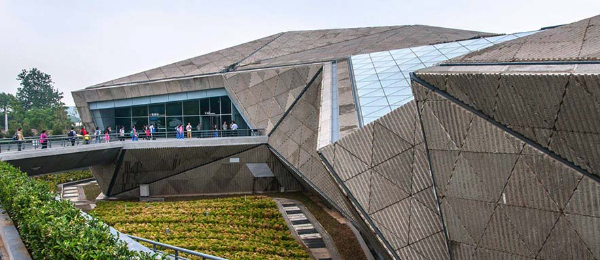Zhoukoudian Site Museum

Zhoukoudian Site Museum
周口店遗址博物馆
Address: 1 Zhoukoudian Street, Fangshan district, Beijing
Websites:
www.zkd.cn/zkdeng/(En)
www.zkd.cn/(Cn)
Hours:
9:00-16:30 (April 1 - October 31, no admission after 16:00).
9:00-16:00 (November 1 - March 31, no admission after 15:30).
General admission: 30 yuan
Online ticket booking: www.zkd.cn/yyfw.jhtml

The Zhoukoudian Site Museum is a museum of paleoanthropology. It is dedicated to the systematic introduction of the natural environment and living conditions of homo erectus (known as the Peking Man) and homo sapiens (known as the Upper Cave Man) who once inhabited this area. In 1929 Chinese paleontologist Pei Wenzhong (1904-1982) excavated the first complete fossilized Peking Man skullcap at Longgu Hill and shocked the world. Twenty-four years later, the Zhoukoudian Site Museum was inaugurated, just 500 meters away.
The Zhoukoudian site was designated one of the foremost protected cultural sites in 1962 by the State Council and inscribed in the World Cultural Heritage list in 1987 by UNESCO. The museum’s building covers an area of 8,000 square meters. Its coarse surface and robust structure suggest the stone tools used by Peking Man in remote antiquity.
The museum holds a collection of over 7,000 cultural relics, 1000 of which are on permanent display. Not long after Pei Wenzhong's discovery, in the 1930s, more archaeological finds were made at Longgu Hill, including skulls, stone tools, bone needles, and bone accessories of homo sapient, or Upper Cave Man. The series of important discoveries provided a critical component of research into the origin of mankind.
At the front of the exhibition hall is a solid model of Longgu Hill, with stone specimens dating back 100 to 400 million years in the Zhoukoudian area, reflecting the geological changes over time. The models of the fossilized skulls, the fire relics and various stone tools of Peking Man are exhibited in No. 1 Hall. The restored cave of the Upper Cave Man is in No. 2 Hall. No. 3 Hall contains a necklace made by Upper Cave Man as well as a model of the distribution of amniotes fossils and the dwellings of the ancient people. In No. 4 Hall are relics of the ancient people found both in China and all over the world at different periods, such as stone tools and drawings, paintings and other artworks of the Paleolithic Period.
Last Updated: Nov 30, 2018




